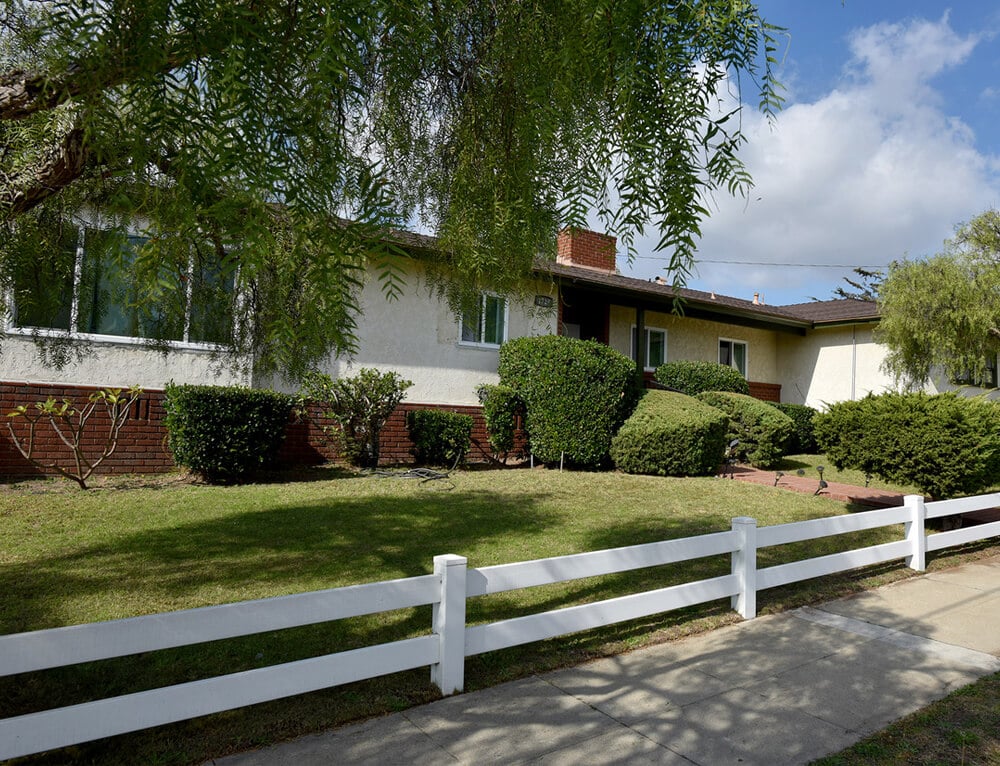
Mid-Century Homes
The Modern Architecture Movement started in the mid-nineteenth Century in Europe, In 1848 The Crystal Palace by Joseph Paxton was exhibited at the Great Exhibition in London. By the 1860’s architects and builders were using concrete and glass in newer buildings. The first steel framed ten story skyscraper, the Home Insurance Building, was built in Chicago in 1884.
As far as housing in America the Prairie style of home became popular due to architects such as Frank Lloyd Wright. This style of homes, with their simple lines and flat roofs, were popular between 1887 and 1935. Examples of these homes can be found at the intersection of Post and Arlington Avenues in Old Torrance and the Ocean Park section of Long Beach. This area is east of Cherry Ave and Bixby Park. Some of the best examples are found on Ocean Bl.
The next modernist movement was the Art Deco. One of the leading architects for this movement was Irving Gill. In laying out the original town of Torrance in 1912, Irving Gill designed several homes and duplexes along with the Torrance Depot in the Art Deco Style. Examples of this style are found all over Southern California in areas that were built between 1919 and the late 1930’s.
By the late 1930’s the Colonial Spanish movement that had been so popular gave way to the mid-century modern or Ranch Style. Many of these homes were very traditional in style keeping some of the characteristics of the Spanish and Craftsman homes. Many of the homes built in this style in the late 1930’s and 1940’s were built with the same floor plans as many Spanish homes. The only difference was the Ranch homes were built with Composition Shingle Hip Roofs and instead of arched entryways there were square entryways. The plaster finish on the inside and outside walls was smooth instead of intricate.
Starting in the late 1930;s as the Great Depression was ending and Southern California became a world class economic powerhouse, countless tracts of the Ranch Homes that can be referred to as Minimal Traditionals were built all over the United States. Due to the material shortages that lasted into the 1950’s these homes had simple floor plan, lines, doorways and finish materials. They were often built with a one or two car attached garage. By the mid to late 1950’s builders started to add second baths off the hallway. By the 1960’s these homes had on-suite baths for the primary bedroom. In more affluent areas these homes were often Traditional, Cape Cod, Story Book or Colonial Revivals.
By the late 1940’s the Rambler or Rambling Ranch Style home became popular with many affluent buyers. These homes were inspired by the Prairie Style homes. Many had lots of glass, at least one fireplace, hardwood floors, open beamed ceilings and more open floor plans for entertaining. In the South Bay Palos Verdes Stone fireplaces, fences, fish ponds, waterfalls and facades were often used until the quarry ran dry.
In the late fifties the Tri-Level Ranch was designed to accommodate the growing families that constituted the Baby Boom and the Post World War II prosperity that defined the Southern California Coast . These homes also were built for entertaining. The separated living room and formal dining room gave way to the living room and dining room combination. The kitchen’s were and the separate breakfast rooms of the earlier Modern homes were also combined into one. The lower levels often were designed with a large den so the kids had a place to watch Television and play while the adults gathered on the main level. Wet bars were also in most of the den’s in these homes. Also one of the features that often took the at least half the space on the upper level was a Primary Suite. These bedrooms were for the parents and had on-suite baths, often two closets and large bedrooms that could accommodate Queen and King Sized bedroom sets.
Examples of Tri-level Ranch homes can be found all over the South Bay. Notable areas in Torrance are Palo Del Amo and Marble Estates (often considered one area), the Palo Del Amo Woods in Harbor City and the Mesa Verde tract in Rancho Palos Verdes